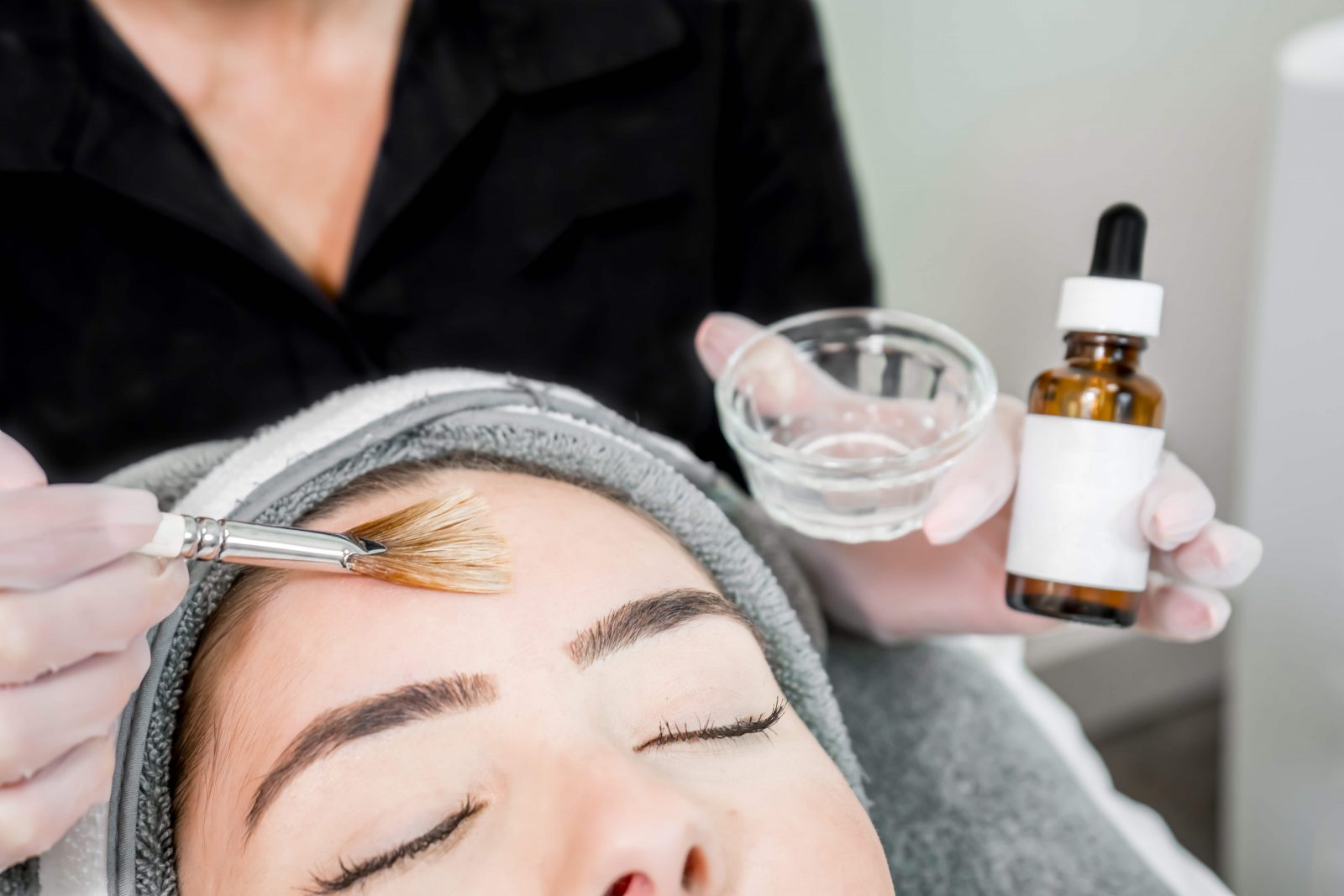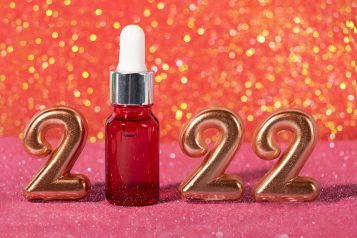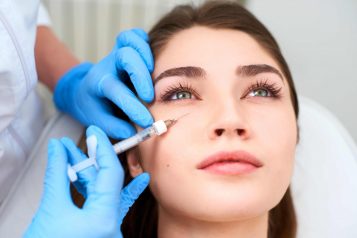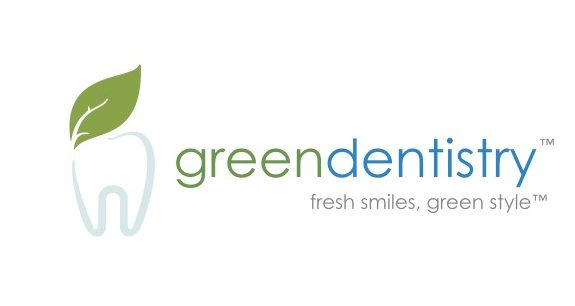Michele S. Green M.D., FAAD., is a Board-Certified Cosmetic Dermatologist, Fellow of the American Academy of Dermatology, and has been an international leader in cosmetic dermatology for over 25 years. Upper East Side patients and those from the surrounding areas of New York City flock to her practice for a variety of cosmetic dermatology treatments. A graduate from Yale University, with an MD and Chief residency from The Mount Sinai School of Medicine in NYC, Dr. Green treats some of the most discerning, demanding women and men in the world, with issues ranging from premature skin aging to hyperpigmentation, rosacea, acne, skin laxity, hair loss, and sun damage.
 Photo Credit: Shutterstock
Photo Credit: Shutterstock
Haute Beauty Expert Dr. Michele S. Green specializes in chemical peels and has been treating patients in her boutique NYC office with chemical peels for over 25 years. Naturally, she is a prime candidate to explain the ins and outs of chemical peels.
What are Chemical Peels?
Before delving into the intricacies of this highly effective cosmetic procedure, it's important to grasp what it is. A chemical peel is a type of skin resurfacing treatment which uses a chemical solution that is applied to the skin to remove the outer layers of dead skin. Chemical peels, through chemical exfoliation, stimulate cell turnover correcting skin discoloration, unclogging the pores, giving the skin a vibrant glow. Chemical peels remove the outermost layers of the skin. Depending on the strength and type of chemical peel, the depth of the peel and effect can be controlled. This controlled injury to the skin, is what facilitates the peeling of the skin, and improvement in the texture of the skin, treating acne, acne scars, sun damage, lines, wrinkles, and hyperpigmentation.
What are some of the reasons a patient would qualify to get a chemical peel?
Because they can treat such a variety of skin conditions, chemical peels are the most popular cosmetic procedure in dermatology. The following skin conditions can be treated by chemical peels:
- Sun damage
- Actinic Keratoses or Pre-cancers
- Hyperpigmentation
- Melasma
- Age spots
- Sunspots
- Freckles
- Post-inflammatory hyperpigmentation (PIH) from acne marks or improper laser treatments from IPL, Fraxel laser, or Picosure
- Skin texture issues
- Acne scars
- Acne
- Rosacea
- Fine lines and wrinkles
Are there different types of Chemical Peels? What are they?
The American Society of Dermatology has categorized three levels of chemical peels.
- Light Chemical Peels: Light chemical peels are superficial peels, and often referred to as a “lunch” time peel. This type of acid peel is perfect for someone with relatively good skin who just wants to refresh their skin. Light chemical peels can treat superficial fine lines and wrinkles in addition to correcting uneven skin tone and texture. Light chemical peels can be done as often as every two weeks for several months. Light chemical peels treat acne breakouts, skin texture, skin tone, fine lines and rough and dry skin. Light chemical peels generally require only a couple of days of recovery. Patients can go back to work immediately after a light peel since there is only some mild dryness, redness, and irrigation and your skin exfoliates the dead skin. You are left quickly with a healthy glow to your skin. Most patients have a series of light peels to rejuvenate their skin.
- Medium Chemical Peels: Medium peels are stronger peels which may require several more days of downtime (seven to 10 days) due to the moderate flaking and peeling of the skin. The chemicals used to administer these peels are a stronger type and/or concentration and are used to achieve a deeper level of chemical peel. After these medium peels there can be some increased healing time, since these peels penetrate into the dermis of the skin and can leave redness, flaking and causing, which can take over a week to resolve. Most patients have medium peels three to four times a year. Medium chemical peels treat deeper lines and wrinkles, skin discoloration and pigmentation, Melasma, acne scars and post-inflammatory hyperpigmentation (PIH) from acne or lasers.
- Deep Chemical Peels: Dermatologists and plastic surgeons use deep chemical peels to treat deeper lines and wrinkles, and severe acne scarring. These peels require more downtime as they penetrate deeper into the dermal layers of the skin. Phenol acid is one of the peeling agents used in this type of deep chemical peel. Skin color is a determinant of a patient’s appropriateness for a deep chemical peel, with patients of darker skin tones not good candidates. Deep peels often require the use of a numbing agent or sedation, and should only be performed by a board-certified dermatologist. Deep chemical peels treat sun damage, deep lines and wrinkles, pre-cancers and deep acne scars. The healing time of a deep acid peel can be two to three weeks and you are bandaged immediately after the procedure. A potential side effect of improper deep peels can be blisters or burns. Immediately after all chemical peels, cool compresses are applied to the treated area. Lotion is applied for dryness and sunscreen of SPF 50 or higher is used on a daily basis. Strict sun avoidance and sunscreen use is essential during and after the chemical peel process, to maintain the positive and rejuvenated effects.

Photo Credit: Dr. Michele S. Green
Mesopeel, Melasma Treatment and Cosmelan Treatment - What are they?
A Mesopeel is a specially formulated chemical peel that addresses all types of hyperpigmentation, fades pigment, and controls melanocyte activity. Mesopeels are designed to treat and fade skin discoloration, dark spots, and photo aging, in a gentle yet efficient manner. Many delicate areas of the body, such as the axillae, groin, inner thighs, face, and under eye area, have hyperpigmentation and traditional chemical peels can be too irritating to many patients in these sensitive areas. Mesopeels, through the process of chemoexfoliation, lead to an inflammatory reaction of the reticular dermis, and induce new collagen and elastin production. Mesopeels are specially formulated to treat these sensitive areas of the body without any discomfort or downtime (only minutes).
Mesopeels can treat the face, arms, chest, buttock, back, axillae, groin, inner thighs and the area around the under eye called the Periocular.
Melasma is one of the most common skin conditions associated with brown or gray-brown patches of skin that are darker than the rest of the face. Despite its commonality, the cause for this condition is still unknown. The dark patches of skin that are related to Melasma are typically found on the forehead, cheeks, and the upper lip. Melasma has been found to be linked to an overproduction of melanin in concentrated cells of the skin via melanocytes (melanin-producing cells). This skin condition can be exacerbated or triggered by a variety of factors. Regardless of gender, skin tone, and skin type, patients with melasma often tend to feel self-conscious about the cosmetic appearance of concentrated pigment patches.
The Cosmelan® peel is a professional-grade mask that is left in place for a number of hours (depending on the degree of pigmentation and skin type). The cream is easily removed at home by the patient, with a neutral gentle facial cleanser, several hours later. Cosmelan® will produce an initial “peeling” of the skin, which will leave the skin smooth and dramatically decrease the signs of facial pigmentation. Cosmelan® is a simple and safe treatment with minimal downtime. The patient returns three weeks later for a touch-up of Cosmelan® in order to treat any residual pigmentation.
Many patients suffer from hyperpigmentation and although Cosmelan was initially developed to treat melasma, Dr. Green has expanded its use to incorporate the treatment of acne scars, post-inflammatory hyperpigmentation (PIH) from lasers, sun spots, and sun damage and discoloration on the face, chest, and body.
How much does a chemical peel cost?
The cost for a chemical peel will vary depending on both the strength and type of chemical peel. The cost of a chemical peel can range from $400 to $600, if there is anesthesia or extensive preparation involved. A typical light chemical peel by a board-certified dermatologist generally is around 500 dollars per treatment. Spas, or clinics, with non-physician providers may be priced less and are generally performed by technicians with less cosmetic experience in different skin tones and types of chemical peels.
Are there side effects to chemical peels?
It is completely normal, and even expected, to experience dryness and flaking for several days to a week, depending on the depth of the chemical peel. The use of moisturizers and lotions will treat these side effects. When chemical peels are performed by inexperienced and unlicensed providers, the risks and side effects increase. There is the risk of infection and/or scarring from the chemical peel, especially if the wrong type of chemical peel is performed for a specific skin tone. There is also a risk of hyperpigmentation and permanent hypopigmentation, or lack of pigment. Infection is also a risk from a chemical peel.
How can you get started with chemical peels today?
If you are bothered by fine lines, wrinkles, or the visible signs of aging, Dr. Michele Green is here to help. Dr. Green is a leading NYC dermatologist with extensive experience in a number of non-surgical, non-invasive procedures which can address various skincare needs such as lasers, dermal filler, and lip augmentation treatments, including Restylane. Dr. Green has been consistently voted as one of the “Best Doctors” by Castle Connelly, New York Magazine, Super Doctors, and The New York Times as a pioneer in the field of cosmetic and medical dermatology. Please call the office today at 212-535-3088 or contact us online to schedule a consultation to discuss Restylane dermal fillers and other non-invasive dermatologic procedures.
Find out more information regarding the different types of chemical peels.
For more information, visit Dr. Michele S. Green's social media:





















